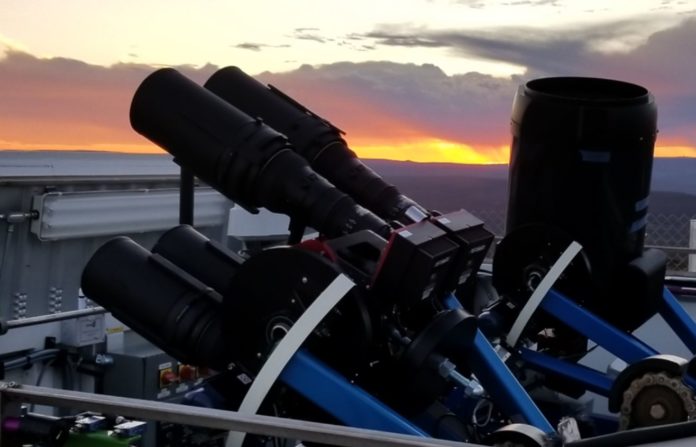OSU astronomers have detected 116,000 new variable stars, according to a new article.
All-Sky Automated Survey for Supernova (ASAS-SN), a global network of 20 telescopes that can peer into the cosmos at a depth 50,000 times greater than the human eye, discovered these celestial bodies. The study has been run by Ohio State researchers for nearly a decade.
Now, in a paper posted on arXiv, an open-access preprint server, researchers explain how they used machine learning to find and classify variable stars, which are objects in space whose brightness changes over time, especially when seen from Earth.
Observing the variations in these stars’ properties over time can give us valuable insights into their masses, radii, temperatures, and even their chemical makeup. As a matter of fact, our sun is a variable star. According to Collin Christy, the primary author of the article and an ASAS-SN analyst at Ohio State, surveys like ASAS-SN are particularly useful for identifying systems that can expose the intricacies of stellar processes.
He described variable stars as “sort of like a stellar laboratory.” “They’re really neat places in the universe where we can study and learn more about how stars actually work and the little intricacies that they all have.”
But in order to find more of these hard-to-find things, the team had to first bring in data from the project that hadn’t been used before. For years, ASAS-SN looked up at the sky through V-band filters, which are optical lenses that can only identify stars whose light falls within the visible range of colors. However, in 2018, the project switched to g-band filters — lenses that can detect a wider range of blue light — and the network’s capacity increased from 60 million to over 100 million stars per hour.
However, unlike ASAS-citizen SN’s science effort, which depends on volunteers to sort through and classify astronomical data, Christy’s research requires artificial intelligence.
“If you want to look at millions of stars, it’s impossible for a few humans to do it by themselves. It’ll take forever,” noted Tharindu Jayasinghe, a doctorate student in astronomy and an Ohio State presidential fellow who was a co-author of the research.
As a result, they “had to bring something creative into the mix, like machine learning techniques.”
The new research focused on information from Gaia, a mission to make a three-dimensional map of our galaxy, as well as from 2MASS and AllWISE. From a library of around 55 million solitary stars, Christy’s team generated a list of 1.5 million possible variable stars using a machine learning method.
Following that, researchers narrowed the field of candidates even more. Nearly 400,000 of the 1.5 million stars they investigated turned out to be true variable stars. More than half of them were already known to astronomers, but 116,027 of them were brand-new discoveries.
Despite the fact that the study required machine learning to complete, Christy’s team believes citizen scientists can still play a role. Indeed, he stated that volunteers with the citizen science campaign have already begun to identify junk data.
“Having people tell us what our bad data looks like is super useful,” Christy explained, “because initially, the algorithm would look at the bad data and try to make sense of it.”
However, employing a training set of all that terrible data helps the team to tweak and improve the algorithm’s overall performance.
“This is the first time that we’re actually combining citizen science with machine learning techniques in the field of variable star astronomy,” Jayasinghe added.
“We’re expanding the boundaries of what you can do when you put those two together.”
Image Credit: Getty
You were reading: Astronomers Detect 116,000 New Variable Stars That Change Brightness
